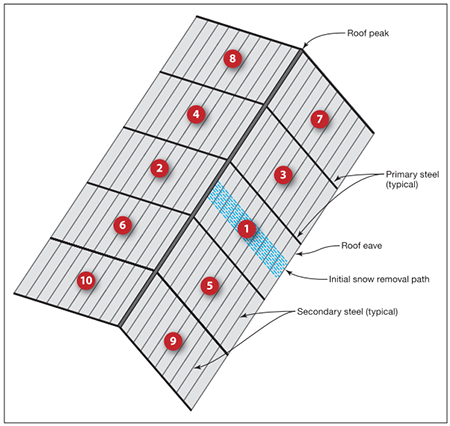Purpose of this web site.
Warm roof types snow load.
Loads on building structures.
Use dashed line ct 1 2 cold roof obstructed roof.
You need to use a snow load formula for flat roofs.
Use solid line ct 1 1 intermediate roof cs from fig 7 2b slippery unobstructed roof.
The purpose of this web site is to provide ground snow load analysis information and data gathered from all 50 states.
First figure out how deep the snow is piled up there.
The density of snow and hence its load per square foot depends on the type of snow.
Those that are unventilated and have an r value less than 30 ft 2 h f btu 5 3 c m 2 w and those that are ventilated and have an r value less than 20 ft 2 h f btu 3 5 cm 2 w.
Check roof thermal factor ct 1 0 warm roof cs from fig 7 2a slippery unobstructed roof.
When we design homes in the mountains we pay careful attention to all the details of the building envelope to insure that the finished product will perform.
There is no stronger protection against heavy snow loads than shake or slate roofs.
When heavy snow meets fierce winds even the best engineered buildings can collapse.
2 1 building code definitions.
Use dashed line obstructed roof.
This chapter contains the building code definitions of snow load types of snow the variables that factor into roof snow loads and the risks various.
That s why it s important to calculate your roof load and be adequately insured for this type of situation.
The amount of additional snow load or surcharge depends on the difference in height of the two adjacent roofs and the lengths of roof perpendicular to the drop in height.
Snow and the mountain environment are tough on everything and your home is no exception.
How snow load can damage your buildings.
A mountain home should to be able to withstand all that nature throws at it and provide its inhabitants with a warm dry sanctuary from the elements.
Tructural engineers use building codes to determine design snow.
On the other hand snow that stayed on your roof for a few days will settle and while it seems that the cover gets thinner its weight doesn t change it s just the density that is different.
The easiest way is to push a yardstick into the snow on the roof selecting an area that looks typical of the overall snow depth.
If your roof is flat it is more likely to have snow load problems than if it is pitched.
Snow load is the downward force on a building s roof by the weight of accumulated snow and ice.
For example fresh snow is soft fluffy and light.
Made of a composite material that closely imitates the real thing but with much lighter weight this roofing material provides superior protection for your home and family when it comes to snow and ice.
Currently the international building.
If slope 5 calculate sloped roof snow load.

